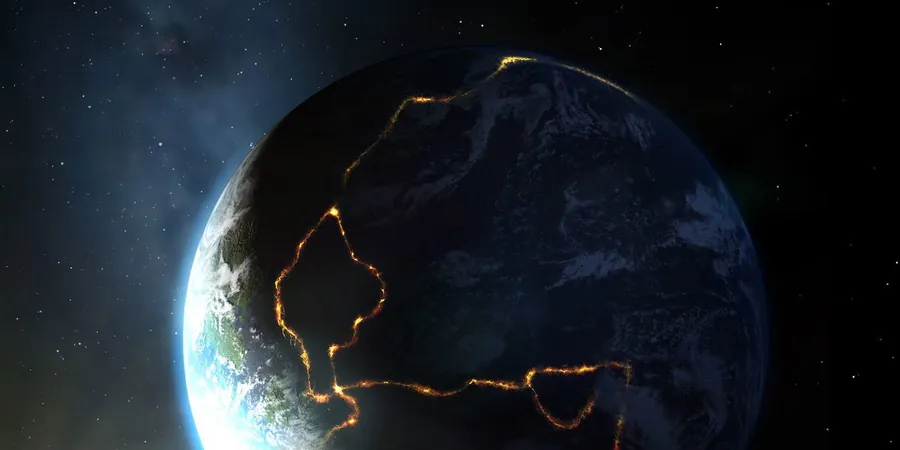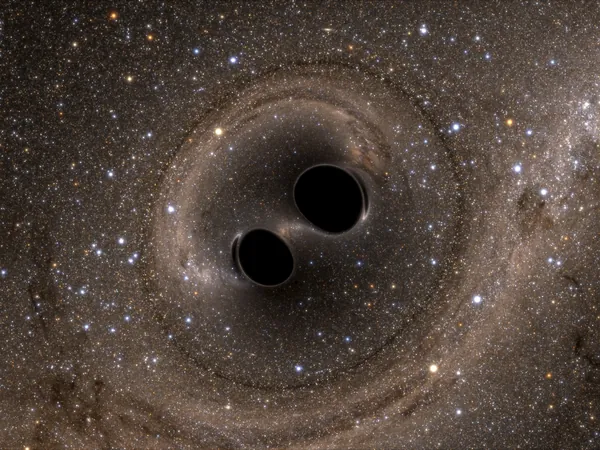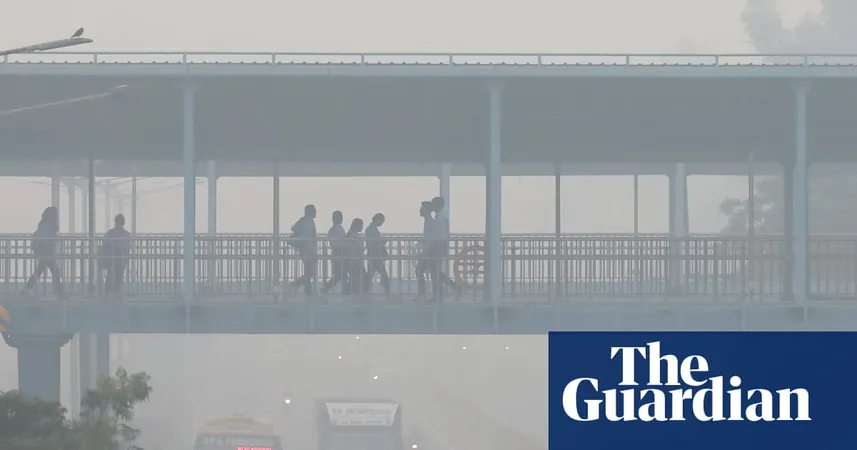
Unlocking Earth’s Secrets: A Fingerprint in Ancient Rock Could Reveal the Ring of Fire's Origins!
2025-06-17
Author: William
Discovering the Ring of Fire's Hidden History
Spanning an astonishing 25,000 miles and boasting around 450 volcanoes, the Ring of Fire is Earth's most seismically active region. Yet, understanding its formation has remained a monumental challenge for geologists.
A Revolutionary Approach to Understanding Subduction
One groundbreaking theory suggests that the eastern section of the Ring was shaped by a process called subduction 'invasion'—imagine tectonic plates sliding beneath one another like a contagion spreading from one oceanic plate to another. Traditionally, proving this hypothesis has proven elusive.
However, a recent study published in the journal Geology has introduced a detailed model of paleo-Pacific subduction that may finally provide answers. Joã o Duarte, a geologist at the University of Lisbon, emphasizes that this is "not just speculation"—it's supported by concrete evidence from geological records.
Unraveling the Geological Puzzle
Understanding the origins of subduction is notoriously difficult since the submerged crust is often destroyed in the process. The study led by Mark Allen from the University of Durham introduces the concept of the 'Dupal anomaly.' This intriguing phenomenon was first noticed in 1984, when geologists identified a unique chemical fingerprint associated with oceanic basalts.
The researchers discovered that this long-lasting signature exists in volcanic rocks across the western Pacific, suggesting that ancient material spread from Tethys—an ocean that existed 300 million years ago when modern-day China was merely a cluster of islands—into new territories, 'infecting' other plates and causing them to descend.
Fingerprint Evidence of Our Planet's History
"It's akin to finding a fingerprint at a crime scene," Allen disclosed to Scientific American. He posits that the final acts of these ancient oceans helped trigger the downward movement of the Pacific plate beneath the Asian continent.
Looking Ahead: Is Another Ring of Fire on the Horizon?
While this compelling study presents strong evidence for subduction invasion, it stops short of explaining the mechanisms behind this geologic 'infection.' There are several other margins worldwide that could potentially spawn a new Ring of Fire, especially the quiet Atlantic plate.
Earlier this year, Duarte published findings on the Gibraltar Subduction Zone, where the African plate subducts beneath the Eurasian plate, suggesting that it could also be 'infecting' the Atlantic.
The Long Game of Geology
Of course, these dramatic geological shifts unfold over millions of years, with estimates indicating that the Atlantic infection will take at least another 20 million years to manifest. In the realm of geology, it's all about patience and the long game.









 Brasil (PT)
Brasil (PT)
 Canada (EN)
Canada (EN)
 Chile (ES)
Chile (ES)
 Česko (CS)
Česko (CS)
 대한민국 (KO)
대한민국 (KO)
 España (ES)
España (ES)
 France (FR)
France (FR)
 Hong Kong (EN)
Hong Kong (EN)
 Italia (IT)
Italia (IT)
 日本 (JA)
日本 (JA)
 Magyarország (HU)
Magyarország (HU)
 Norge (NO)
Norge (NO)
 Polska (PL)
Polska (PL)
 Schweiz (DE)
Schweiz (DE)
 Singapore (EN)
Singapore (EN)
 Sverige (SV)
Sverige (SV)
 Suomi (FI)
Suomi (FI)
 Türkiye (TR)
Türkiye (TR)
 الإمارات العربية المتحدة (AR)
الإمارات العربية المتحدة (AR)